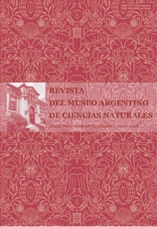The Broken Zig-Zag: Late Cenozoic large mammal and tortoise extinction in South America
Resumen
During the latest Pleistocene-earliest Holocene, South American terrestrial vertebrate faunas suffered one of the largest (and probably the youngest) extinction in the world for this lapse. Megamammals, most of the large mammals and a giant terrestrial tortoise became extinct in the continent, and several complete ecological guilds and their predators disappeared. This mammal extinction had been attributed mainly to overkill, climatic change or a combination of both. We agree with the idea that human overhunting was the main cause of the extinction in South America. However, according to our interpretation, the slaughtering of mammals was accomplished in a particular climatic, ecological and biogeographical frame. During most of the middle and late Pleistocene, dry and cold climate and open areas predominated in South America. Nearly all of those megamammals and large mammals that became extinct were adapted to this kind of environments. The periodic, though relatively short, interglacial increases in temperature and humidity may have provoked the dramatic shrinking of open areas and extreme reduction of the biomass (albeit not in diversity) of mammals adapted to open habitats. Many populations were surely close to a minimum level of population viability. During the longer glacial periods, mammals populations recovered. This alternation of low and high biomass of mammals from open and closed areas is what we refer to as the Zig-Zag. During the present interglacial, humans entered South America and broke the Zig-Zag when killed all the megamammals and almost all the large mammals during their less favourable periodic lapse.
Texto completo:
PDFEnlaces refback
- No hay ningún enlace refback.

This work is licensed under a Creative Commons Attribution 3.0 License.

